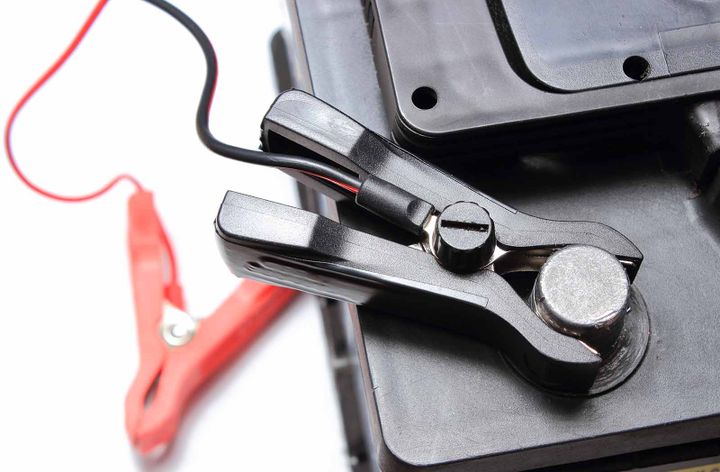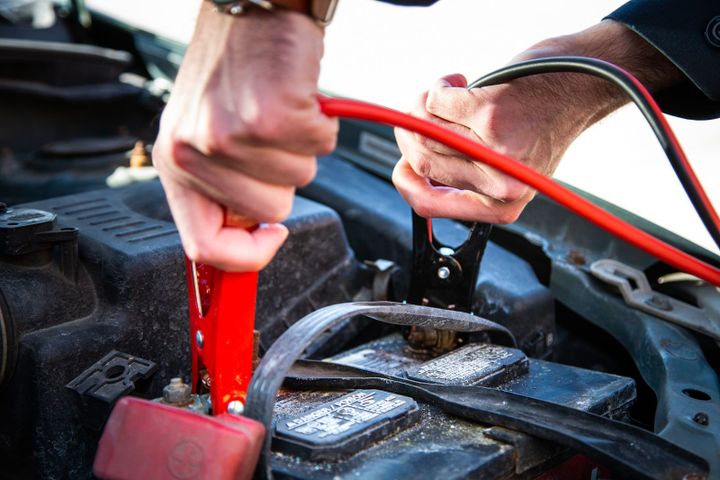


Batteries are essential components in modern technology, providing portable and reliable sources of power for a wide range of applications, from household electronics to industrial machinery and electric vehicles. They work by converting chemical energy into electrical energy through electrochemical reactions. Understanding the functionality and potential issues of battery cells is crucial for maintaining and optimizing battery performance.

Before we dive into the solution, it's essential to comprehend the main causes that can lead to a dead cell in a battery. Here are the most common culprits:
Sulfation is a prevalent issue that occurs when a battery is left discharged for an extended period. During this time, lead sulfate crystals build up on the plates, reducing the battery's capacity and preventing proper charging. These crystals act as an insulator, hindering the chemical reaction necessary for charging and discharging.
| Sulfation Process |
|---|
| When a battery is undercharged or left discharged for extended periods, lead sulfate crystals form on the plates. |
| These crystals coat the plates, insulating them and preventing the chemical reaction needed for charging/discharging. |
| If left unchecked, sulfation can permanently damage the battery and render it unusable. |
Vibrations, heat, or impact can cause internal shorts or plate damage within the battery, leading to dead cells. This physical damage can create an internal short circuit, draining the affected cell and rendering it useless.
| Types of Physical Damage |
|---|
| Shorts between plates |
| Cracked separators |
| Plate shedding |
| Cracks or leaks in the battery case |
These issues can arise due to various factors, including:
Vibrations from rough roads or engine operation
Overcharging or improper charging
Manufacturing defects
Impacts or drops
Over time, the active materials in the battery plates degrade, and the battery loses its capacity to hold a charge. This natural aging process is inevitable, and eventually, it will lead to cell failure, even with proper maintenance.
| Battery Aging Process |
|---|
| The positive grid corrodes over time, shedding active material. |
| As the active material is lost, the cell can no longer provide sufficient capacity. |
| This process occurs gradually through charge/discharge cycles. |
| Eventually, the battery will reach the end of its service life and need replacement. |
When faced with a potential dead cell situation, the first step is to conduct a thorough inspection and diagnosis. Here's what I typically do:
I start by visually inspecting the battery for any cracks, leaks, or bloating in the case. These signs can indicate physical damage or internal issues.
| Visual Inspection Checklist |
|---|
| Cracks in the battery case |
| Leaks or signs of acid exposure |
| Bloating or swelling of the case |
Using a multimeter, I check the battery's voltage. For a fully charged 12V battery, the reading should be around 12.6V. Anything significantly lower could be a sign of a problem.
Next, I perform a load test to check if the battery can deliver sufficient current for starting the vehicle. This test helps identify if there's a dead cell or if the battery is simply discharged.
| Load Test Procedure |
|---|
| Connect a load tester to the battery terminals. |
| Apply a load simulating the starter motor's current draw. |
| Observe the voltage drop and compare it to the manufacturer's specifications. |
| A significant voltage drop indicates a problem with the battery's ability to deliver current. |
Finally, I use a hydrometer or conductance tester to check the state of charge of each individual cell. If one cell reads significantly lower than the others, it's a clear indication of a dead cell.
| Cell State of Charge Testing |
|---|
| For flooded lead-acid batteries, a hydrometer can measure the specific gravity of the electrolyte in each cell. |
| For sealed batteries, a conductance tester is used to measure the electrical conductance of each cell. |
| A cell with a significantly lower reading than the others is likely dead or failing. |
Once I've identified the root cause, I can determine the best course of action. Here are the typical repair instructions I follow:
If sulfation is the culprit, I'll attempt to dissolve the lead sulfate crystals by slow charging the battery at a high voltage, typically around 15-16V, for an extended period. Alternatively, I may use a battery desulfator or pulse charger designed specifically for removing sulfation. However, if these methods are unsuccessful, the battery may need to be replaced.
| Desulfation Methods |
|---|
| Slow charging at high voltage (15-16V) for an extended period |
| Using a dedicated battery desulfator or pulse charger |
| If unsuccessful, the battery may need to be replaced |
In cases of physical damage, individual cell replacement is possible, but it requires specialized skills and matching replacement cells. More often than not, it's more cost-effective to simply replace the entire battery.
| Physical Damage Repair Options |
|---|
| Individual cell replacement (requires specialized skills and matching cells) |
| Full battery replacement (more cost-effective in most cases) |
When a battery fails due to age-related degradation, there's no repair option available. The only solution is to replace the battery with a new one.
Throughout the repair process, I always emphasize the importance of working in a well-ventilated area and wearing protective equipment when handling batteries. Additionally, I ensure that the chargers used are designed for the specific battery type and that I follow the manufacturer's instructions to the letter.
While battery issues are sometimes unavoidable, there are several steps you can take to prevent recurrence and extend the life of your battery:

Check and top up the water levels periodically in flooded lead-acid batteries.
Fully charge the battery after each discharge cycle.
Clean the battery terminals and case regularly to prevent corrosion.
Consider using battery maintainers or trickle chargers for long storage periods.
| Battery Maintenance Checklist |
|---|
| Check and top up water levels |
| Fully charge after each discharge |
| Clean terminals and case |
| Use maintainers or trickle chargers for storage |
Avoid leaving batteries deeply discharged for extended periods.
Minimize vibrations and shocks during operation.
Ensure the charging system is working properly to prevent undercharging.
Replace batteries before their expected service life is exceeded.
| Proper Battery Usage |
|---|
| Avoid deep discharges |
| Minimize vibrations and shocks |
| Ensure proper charging system operation |
| Replace batteries before end of service life |
By following these preventive measures, you can significantly reduce the likelihood of encountering dead cell issues and prolong the lifespan of your battery.
When it comes to replacing a car battery, the cost can range from $50 to $300 or more, depending on the battery type, size, and vehicle make/model. Attempting to repair a battery with a dead cell is generally not cost-effective compared to a full replacement, unless the battery is relatively new and still under warranty. Additionally, you should factor in professional labor costs, which typically range from $20 to $100, in addition to the battery cost.
| Battery Replacement Cost Factors |
|---|
| Battery type (lead-acid, AGM, lithium-ion) |
| Battery size and capacity |
| Vehicle make and model |
| Professional labor costs |
In conclusion, while it is possible to charge a battery with a dead cell in some cases, the success rate is often low, and the effort may not be worth it. As an automotive mechanic, my recommendation is to prioritize preventive maintenance and timely battery replacement to avoid the hassle and potential risks associated with dead cell issues. By understanding the causes, conducting proper inspections, and following the appropriate repair or replacement procedures, you can ensure the optimal performance and longevity of your vehicle's battery.
Sulfation, where lead sulfate crystals build up on the plates due to undercharging or leaving the battery discharged for extended periods, is the most common cause of a dead cell.
In some cases, a battery with a dead cell can be recharged using specialized techniques like slow charging at high voltage or using a battery desulfator, but success is not guaranteed.
Fully charge the battery after each discharge cycle and avoid leaving it deeply discharged for extended periods. Consider using battery maintainers or trickle chargers during long storage.
In cases of physical damage, it is generally more cost-effective to replace the entire battery rather than attempting individual cell replacement, which requires specialized skills and matching replacement cells.
Replace your car battery before its expected service life is exceeded, typically every 3-5 years, depending on usage and maintenance.
Repairing a battery with a dead cell is possible in some cases, but the success rate is often low, and it may not be cost-effective compared to a full replacement.
Always work in a well-ventilated area and wear protective equipment when handling batteries. Follow the manufacturer's instructions and use chargers designed for the specific battery type.
Consult local regulations or contact your local waste management authority for proper disposal methods, as batteries contain hazardous materials and should not be discarded with regular household waste.
Yes, lithium-ion and other advanced battery technologies are becoming more prevalent in automotive applications, offering advantages such as higher energy density and longer lifespan.
Lead-acid batteries can have a significant environmental impact if not properly disposed of, as they contain lead and sulfuric acid, which can contaminate soil and water sources.

Sarah isn't your average gearhead. With a double major in Mechanical Engineering and Automotive Technology, she dived straight into the world of car repair. After 15 years of turning wrenches at dealerships and independent shops, Sarah joined MICDOT to share her expertise and passion for making cars run like new. Her in-depth knowledge and knack for explaining complex issues in simple terms make her a valuable asset to our team.














